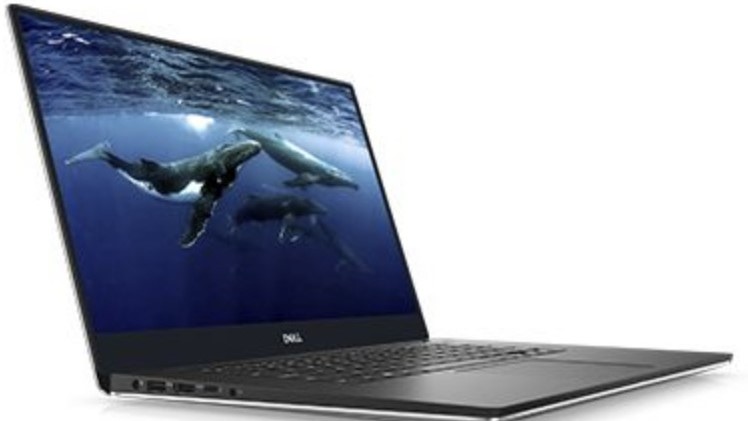
- This article originally appeared on Windows Central and has been inducted into our Back to School guide.

Dell XPS 15 - Full HD
The FHD models of the XPS 15 7590 start at a considerably cheaper price, and you're still going to get an outstanding PC experience thanks to a quality build. Battery life should be longer, and the NVIDIA GTX 1650 graphics card (GPU) will fare better when gaming. However, there's no touch function and no support for an active pen.
Pros:
+Cheaper starting price
+Longer battery life
+Slightly lighter build
+Same quality build as previous model
+100% sRGB color
Cons:
-No touch function
-No active pen support

Dell XPS 15 - 4K
You will ultimately pay more for a 4K display, either OLED or IPS, in the XPS 15, but in the latter case, you'll get touch and active pen support. The 4K displays also have color reproduction geared toward design and editing, making them a better choice for pros. Keep in mind battery life will take a hit and models with 4K display will be slightly heavier.
Pros:
+IPS option supports touch and inking
+OLED has 100% DCI-P3 color
+IPS has 100% AdobeRGB color
+Beautiful high resolution
+Same quality build
Cons:
-More expensive than FHD versions
-Reduced battery life
-Slightly heavier
The three XPS 15 displays — FHD, 4K IPS, and 4K OLED — are all built into a chassis that has the same dimensions, ports, and features, though some lower-end performance hardware (and a lower price) is only available with the FHD screens. Below is a comparison of the displays and the hardware options available with each different type of display.
Dell XPS 15 FHD vs. 4K tech specs
Why you can trust TechRadar
| Header Cell - Column 0 | Dell XPS 15 (FHD) | Dell XPS 15 (4K) |
|---|---|---|
| Display size | 15.6 inches | 15.6 inches |
| Resolution | 1920x1080 | 3840x2160 |
| Brightness | 500 nits | IPS: 500 nits; OLED:400 nits |
| Color | 100-percent sRGB | IPS: 100-percent AdobeRGB; OLED: 100-percent DCI-P3 |
| Contrast | 1500:1 | IPS: 1500:1; OLED: 100000:1 |
| Response time | 35ms | IPS: 35ms; OLED: 1ms |
| Refresh rate | 60Hz | 60Hz |
| Power draw | 4.30W | IPS: 10.41W; OLED: 14.80W |
| Touch | No | IPS: Yes; OLED: No |
| Pen support | No | IPS: Yes; OLED: No |
| Processor | Intel Core i5-9300H; Intel Core i7-9750H; Intel Core i9-9980HK | Intel Core i7-9750H; Intel Core i9-9980HK |
| Storage | 256GB, 512GB, 1TB, 2TB M.2 PCIe SSD | 256GB, 512GB, 1TB, 2TB M.2 PCIe SSD |
| Memory | 8GB, 16GB, 32GB DDR4-2666MHz | 16GB, 32GB DDR4-2666MHz |
| Graphics | Intel UHD Graphics 630; NVIDIA GTX 1650 | NVIDIA GTX 1650 |
| Battery | 56Wh, 97Wh | 97Wh |
Display
The refreshed Dell XPS 15 7590 now has three display options to choose from, including FHD IPS, 4K IPS, and 4K OLED. While resolution is no doubt the biggest difference, there are a few smaller traits that might sway you in the direction of one of the three options.
The FHD model, which comes at the cheapest price, is still a respectable panel despite sitting at a lower 1920x1080 resolution. It has a WLED backlight that hits up to 500 nits brightness, making it easy to work in well-lit spaces, and it has 100% sRGB and 72% NTSC color reproduction. It also gobbles up the least amount of power of the three displays, so if battery life is a high priority, it's likely your best option. Keep in mind that there is no touch function or pen support, which is likely not as big of a deal on a non-convertible device.
If you opt for the dedicated NVIDIA GTX 1650 GPU for some gaming, it will perform much better and offer higher framerates at the lower resolution. If you're not buying the XPS 15 for any specialized work — design, development, or heavy editing — you should find the FHD model checks all the boxes unless you just want to bask in brilliant 4K while going about usual tasks.
The 4K IPS display comes at you with 500 nits brightness, a 3840x2160 resolution, and 100% AdobeRGB color reproduction, making it a strong contender for photo editing and other specialized work. It does use more power than the FHD model, but it also offers touch and pen support. The laptop is going to weigh slightly more than something with an FHD display, but if you prefer 4K, for casual or professional use, it should be well worth it.
Finally, the new OLED 4K display, which is non-touch, hits 400 nits brightness and has 100% DCI-P3 color reproduction, making it also a strong contender for professional work. Contrast is absolutely brilliant at 100000:1, it has a one-milisecond (ms) response time (compared to 35ms for the other displays), though it does use the most power. The OLED display is actually the cheaper 4K option of the two, coming in at about $50 less than the 4K IPS. If you need the absolute best contrast and the DCI-P3 color reproduction for professional work, this is an outstanding choice.
Performance

Performance hardware differs depending on the display you go with, and if you don't need extreme power, the FHD model is going to be quite a bit cheaper due to the hardware on offer.
Yes, you can configure a model with FHD display to have a Core i9 CPU, 32GB of DDR4-2666MHz RAM, NVIDIA GTX 1650 dedicated GPU, and a 2TB M.2 PCIe solid-state drive (SSD), but you can also go as low as an Intel Core i5 CPU, 256GB M.2 PCIe SSD, 8GB of RAM, and integrated Intel UHD Graphics 630. There's also the option of saving some money with the smaller 56Wh battery, though you can still opt for the larger 97Wh battery for some serious life.
4K models are not available with the Intel Core i5 CPU, 8GB of RAM, or integrated Intel UHD Graphics, so if you do prefer to pay less for the weaker hardware, you will have to go with an FHD display. 4K models also seem to only be available with the larger 97Wh battery, which makes sense due to the increased power draw of the high-res display.
Bottom line? If you'd like ultimate performance, you will be able to get it with an FHD or 4K display, though if you prefer to save some money and go with the baseline hardware on offer, you will have to stick with an FHD display.
Design and features
Aside from some weight differences based on the battery and display in use, XPS 15 models hardly differ. You'll get the same ports, the same webcam, the same keyboard and touchpad, and the same optional fingerprint reader built into the power button.
The chassis is still machined from aluminum and has a carbon-fiber palmrest, and audio will be the same thanks to dual 2W speakers.
The FHD XPS 15 is a lot of laptop for most people
If you'd like to save about $250 at checkout and still get high-end performance hardware in your XPS 15, the FHD display model is quite attractive. It can also be had in low-end hardware for even further savings. Though you won't have touch function or pen support, you will get longer battery life and the NVIDIA GTX 1650, if included, will perform much better when gaming in 1080p.
Dell XPS 15 7590 (FHD)
Lower cost, still a great PC
The FHD XPS 15 is available at a cheaper starting price, you can get the same powerful hardware inside (great for gaming), you'll get longer battery life, and it's a bit lighter. As long as you don't plan on a lot of professional design, development, or editing work, it should make a great choice.
From $1,078 at Dell
The 4K XPS 15 is better for power users
Video and photo editors can certainly take advantage of the extras the 4K XPS 15 models, whether IPS or OLED, have to offer, but know that they're also a great all-around laptops for anyone who appreciates a high-res display. Once you go 4K, it's hard to go back to anything else.
Dell XPS 15 (4K)
A better choice for professionals and power users
4K XPS 15 models will ultimately cost more than FHD models and will have lesser battery life, but if you need a touch display and pen support, brilliant contrast, or precise color reproduction in AdobeRGB or DCI-P3, going with IPS or OLED at the higher resolution makes sense.
From $1,911 at Dell
Sign up for breaking news, reviews, opinion, top tech deals, and more.
